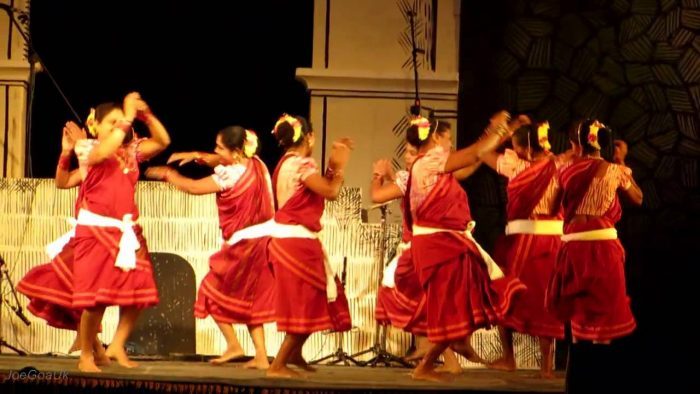Goa has long played an important part in the history of India. In spite of being the smallest state in the country, it has a rich history, heritage, and culture. And a lot of this comes from the original settlers, the tribes of Goa that we’ve learned about in school. What do we really know or even remember from all those years back? Let’s revisit these tribes of Goa and find out if we can jog our memories.
It’s amazing how in these modern times, these tribes have still managed to retain their ancient and indigenous ways of life and traditional practices, customs, and way of living. Of course, a lot of people from these tribes have moved on to what they probably consider a better life, too. Goa has 4 main tribal communities, The Gowdas, Kunbis, Velips, and Dhangars. Most people would have heard about the former 2 than the latter. The internet also has a lot of articles on these.
The tribes of Goa have a rich, cultural background
The 4 main tribes in Goa live in small groups in different villages in the state. They have made their lives work for them in spite of the world becoming modern. It’s interesting to see how they have kept their unique lifestyle, customs, traditions, ceremonies, religious beliefs and superstitions, frozen in time.
Gowdas
This tribal community is believed to be the first settlers in Goa. Unfortunately, there isn’t any written proof of where they came from although they have been linked to the Gowda community from Bengal as they seem to have similar customs and traditions. It is also believed that they took their name from the word ‘Gaon’ which means village in Sanskrit. Gowdas practice Hinduism but do not seem to have any hierarchical order and do not marry outside their community. In fact, they even allow for cross-cousin marriages between paternal and maternal cousins. Women play a major role in economic, social and political activities but cannot take part in any religious rituals, not even related to the deity worshipped in the household. These tribes practice Hindu religion and worship Lord Mallikarjun, a form of Lord Shiva.
Kunbis
Probably the most famous of the tribes living in Goa. The Kunbis are also believed to be among the earliest inhabitants in our fair state. They are known to be simple, hardworking folk and can be found in the interior region of Goa. They tend to lush green fields and live in small mud huts with bamboo roofs adorned with coconut palm leaves or straws. Kunbis are a prime example of a community living in harmony. These tribals live in little hamlets known as ‘kutumba’, from the Sanskrit word ‘kutumbakam’ which means a family. Kunbis have a rich tradition of art and culture to which they attach particular importance. Their songs and dances are melodious, fluid and an explosion of color. The festival of Shigmotsav, held in February-March is the best way to showcase their talents. Kunbis used to practice Hinduism but were converted to Christianity by the Portuguese.
Velips
The Velips are thought to be a sub-caste of the Kunbis and also have certain traditions and customs in common with them. They aren’t found in large numbers and prefer to live in the more remote and rural areas in Goa. Velips can be found in the forest regions of Canacona, Sanguem, and Quepem. The joint family system is prevalent in their lifestyle which is supposed to make them considerably more economically stable.
Dhangars
Dhangars are believed to have migrated to Goa from Gujarat. Members of this tribe are quite pious and religiously worship their god named ‘Bira Deva’. These tribals are mainly shepherds or cattle herders and live a semi-nomadic lifestyle. Their dressing is proof of this as is the fact that they carry a stick at all times and are usually accompanied by 1 or 2 hunter dogs. This particular community of tribals practices polygamy with brides normally being purchased in exchange for cash or kind.
Information credit – Tribal People of Goa/ Tribal Life in Goa: An Intrinsic Part of Goan Lifestyle
ItsGoa/FEB/KDGP


